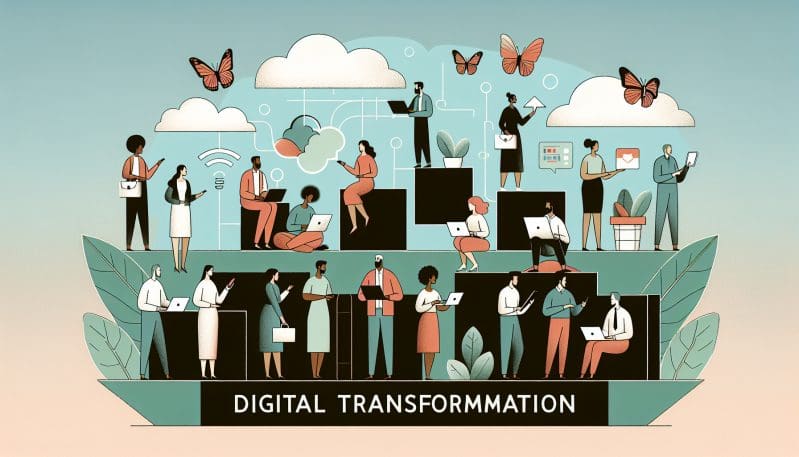Bridging the Digital Divide: Empowering Underrepresented Communities Through Pioneering Digital Transformation Initiatives
- Home
- Bridging the Digital Divide: Empowering Underrepresented Communities Through Pioneering Digital Transformation Initiatives

- Deeksha Joshi
- March 13, 2024
- 0 Comments
In an era where digital connectivity is often taken for granted, stark disparities in access to technology and digital literacy continue to hinder the growth and development of underrepresented communities. At No Worker Left Behind (NWLB), we are steadfast in our mission to close this divide and foster an inclusive digital future. Our approach is not merely about providing the tools; it’s about empowering communities with the knowledge and skills to use those tools effectively, thereby enabling a long-term, sustainable transformation.
In this blog, we will delve into a recent case study where NWLB made a tangible difference in an underserved community’s journey towards digital empowerment. Our focus was a rural town with limited access to technology and digital infrastructure, where the local workforce was primarily engaged in traditional agriculture and small-scale retail businesses.
Challenges Facing the Community
The first challenge was a glaring lack of accessibility to digital devices and high-speed internet. Furthermore, many community members possessed limited digital literacy, making the adoption of digital tools daunting. Cultural barriers, such as skepticism towards technology’s relevance in traditional industries, also impeded progress. The economic strain of investing in unfamiliar technology without immediate and clear benefits was another significant obstacle.
Our Action Plan
NWLB initiated a multi-pronged strategy to tackle these challenges head-on:
1. Partnerships and Infrastructure : We collaborated with local governments and private sector partners to improve internet connectivity and set up digital access points in community centers.
2. Tailored Training Programs : Understanding that one size doesn’t fit all, NWLB designed custom training modules to educate local workers on digital tools relevant to their industries, emphasizing practical benefits.
3. Support Systems : We established ongoing support networks that include tech mentors and help desks to guide community members through their digital journey.
4. Cultural Sensitivity and Inclusion : By involving community leaders and respecting local customs, we fostered a culturally sensitive approach, aligning technological adoption with the community’s values and needs.
Impacts on Local Workers and Businesses
In the short term, workers began leveraging digital tools for market research, online sales, and efficient inventory management. Local businesses witnessed increased exposure and a broader customer base through e-commerce platforms. The long-term effects were even more profound, with the community observing a surge in entrepreneurial activities, a more robust local economy, and, crucially, the establishment of a future-ready workforce.
Lessons for Global Application
Our experience has illuminated several lessons that can be applied globally:
1. The significance of customizing digital solutions to meet specific community needs.
2. The power of collaboration between local stakeholders, NGOs, and private entities.
3. The importance of ensuring ongoing support and creating a safe environment for experimentation and learning.
Influencing Policy and Shaping an Inclusive Future of Work
Our work doesn’t stop at community intervention. Initiatives like these have policy implications – they demonstrate the need for government investment in digital infrastructure and education, and they highlight the cascading benefits of digital literacy for economic and social wellbeing.
By sharing our case study, we contribute to a larger conversation on how to replicate such successes elsewhere. We believe that empowering underrepresented communities through digital transformation is not just a benevolent act but a necessary step towards a more equitable world where, indeed, no worker is left behind.
As we continue our quest, we invite all stakeholders to join hands in this most critical endeavor, for the promise of technology is only as strong as our commitment to share it with all.
